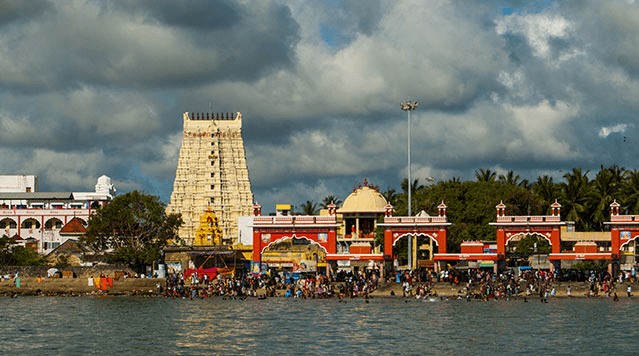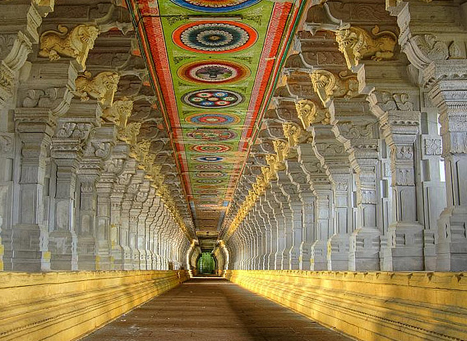Learn all about the Hindu festival of Mahashivratri, celebrated in honor of Lord Shiva. This comprehensive guide covers the history, traditions, rituals, and significance of the festival, and provides insights into the spiritual and cultural significance of this important occasion.
India, a
land of diverse cultures and religions, has a rich spiritual legacy passed down
through ages, and Lord Shiva is one of the most significant deities in the
Hindu pantheon, revered as the destroyer of evil and god of transformation.
Mahashivratri, a Hindu festival dedicated to Lord Shiva, is one of the most
significant festivals celebrated in India every year in February or March,
determined by the Hindu calendar. The festival, meaning "The Great Night
of Lord Shiva," is celebrated worldwide with enthusiasm and devotion by
millions of people. This article explores the customs, traditions, and
significance of Mahashivratri.
Significance of Mahashivratri
Mahashivratri
is celebrated to honor Lord Shiva, who is considered to be the supreme deity in
the Hindu religion. According to Hindu mythology, Lord Shiva is the creator,
destroyer, and protector of the universe. He is also known as "The
Destroyer," as he is responsible for ending the cycle of life and death.
Mahashivratri is celebrated to seek his blessings, which is believed to bring
happiness, prosperity, and good fortune.
Legends associated with Mahashivratri
Mahashivratri
has many legends associated with it. One of the most popular legends is about
the marriage of Lord Shiva and Goddess Parvati. It is believed that on this
day, Lord Shiva and Goddess Parvati got married. According to another legend,
on this day, Lord Shiva drank poison to save the world from destruction. The
poison turned his throat blue, and he came to be known as
"Neelkanth."
Rituals and Customs of Mahashivratri
Mahashivratri
is celebrated in various ways across India. One of the most common rituals is
fasting. Devotees observe a strict fast on this day and break it only after
performing the puja (worship) of Lord Shiva. Some people also observe a partial
fast, where they only eat fruits and drink milk. Devotees also visit temples
and offer milk, honey, and flowers to Lord Shiva's idol. They chant "Om
Namah Shivaya" and other hymns dedicated to Lord Shiva.
The Celebration of Mahashivratri in Different Parts of India
Mahashivratri
is celebrated in different parts of India with unique customs and traditions.
In Varanasi, the city of Lord Shiva, a grand procession is taken out in the
evening. In Ujjain, the city of Lord Mahakal, a grand fair is organized, where
devotees from all over the world come to seek Lord Shiva's blessings. In
Maharashtra, people prepare special dishes like thandai, sabudana vada, and
sabudana kheer on this day.
Significance of the Different Offerings Made on Mahashivratri
Milk,
honey, and belpatra (leaves of the bael tree) are some of the common offerings
made to Lord Shiva on Mahashivratri. It is believed that Lord Shiva is fond of
these offerings and that they bring good fortune. Milk symbolizes purity, while
honey symbolizes sweetness. Belpatra is considered to be a sacred leaf, and it
is believed that offering belpatra to Lord Shiva can wash away sins.
I like to
add some famous Shiva temples in India, and I will select one temple and give
you an example of how Mahashivratri is celebrated there
Kashi Vishwanath Temple, Varanasi
Somnath Temple, Gujarat
Kedarnath Temple, Uttarakhand
Mallikarjuna Jyotirlinga Temple, Andhra Pradesh
Grishneshwar Jyotirlinga Temple, Maharashtra
Mahakaleshwar Temple, Madhya Pradesh
Ramanathaswamy Temple, Tamil Nadu
Bhimashankar Temple, Maharashtra
Amarnath Temple, Jammu and Kashmir
Omkareshwar Temple, Madhya Pradesh
Celebrating Mahashivaratri at Ramanathaswamy Temple, Tamil Nadu
Ramanathaswamy Temple is located on the island of Rameswaram in Tamil Nadu and is one of the most important Shiva temples in India. The temple is renowned for its stunning architecture and intricate carvings, and it is believed to have been built by Lord Rama himself.
Mahashivaratri is a major festival at Ramanathaswamy Temple, and it is celebrated with great enthusiasm and devotion by the local community. The festival usually falls in February or March and lasts for one day and one night.
On the day of Mahashivaratri, the temple is decorated with flowers and lights, and a large number of devotees throng the temple to offer their prayers to Lord Shiva. The day begins with an early morning puja, which is followed by a procession of the deity around the temple.
Throughout the day, devotees offer bilva leaves, milk, and other offerings to Lord Shiva, and the atmosphere is filled with the sound of devotional songs and chants. In the evening, a special puja is held, which is followed by a spectacular display of fireworks.
One of the highlights of the festival is the Mahashivaratri Ratham, a chariot procession that takes place at night. The ratham is decorated with flowers and lights and is pulled by devotees around the temple. It is believed that participating in the ratham yatra can bring blessings and good fortune.
Mahashivaratri at Ramanathaswamy Temple is a truly unforgettable experience, and it is a testament to the enduring spiritual legacy of Lord Shiva in India.
Mahashivratri
FAQs
Q. What is the meaning of Mahashivratri?
A.
Mahashivratri means "The Great Night of Lord Shiva."
Q. Why is
Mahashivratri celebrated?
A.
Mahashivratri is celebrated to seek the blessings of Lord Shiva, who is considered
to be the supreme deity in the Hindu religion.
We hope you found this post from Unusual Insight informative and thought-provoking. By exploring the symbolism and meanings of your dreams, you can gain a deeper understanding of your inner self and the world around you. Be sure to check out our other posts for more intriguing insights and perspectives on a wide range of topics.
Thank you for reading!
You May Like To Read The Follow Topics:
Click here to know Dream Interpretation
Click here to read Parenting Guide
Click here to read Horror related stuffs
Click here to know General topics




Post a Comment